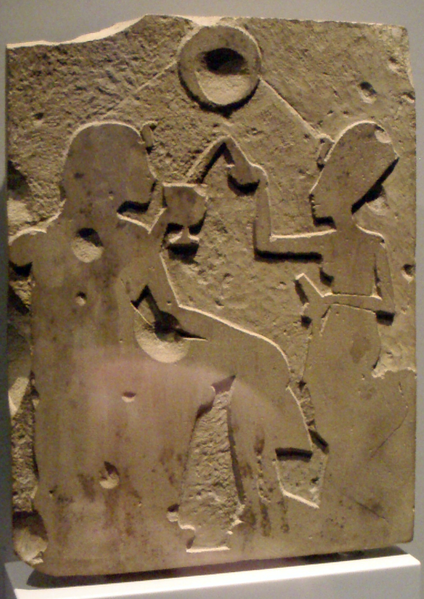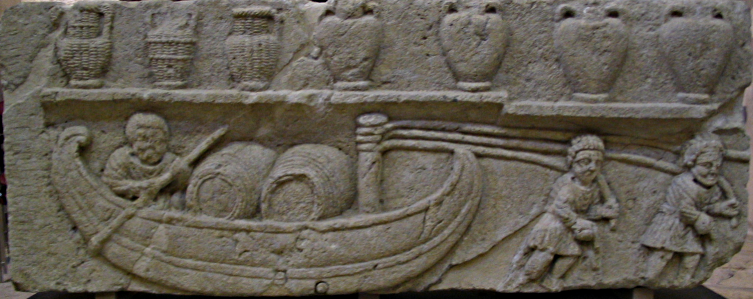
By Lindsay Townsend
In my historical romances, I write about every season and sometimes include scenes from seasonal celebrations, such as the winter Saturnalia in ancient Rome. Then, as now, drink was an important part of such festivals, but what kinds of drink?
 In ancient Egypt, people drank beer or wine. The aristocracy enjoyed sweet wine spiced with honey and the juice of pomegranates. There was red or white wine, with the wine of Buto in the Delta being considered some of the best, but wine was also imported from Syria, Palestine and Greece. The ordinary Egyptian drank beer, made from fermented barley bread and sieved first to remove the bits, and the results are familiar enough: 'Thou art like a broken steering-oar in a ship,' says a school text from the New Kingdom, '...Men run away from before thee, for thou inflictest wounds on them... Thou dost reel, and fallest on thy belly and art besmirched with dirt.'
In ancient Egypt, people drank beer or wine. The aristocracy enjoyed sweet wine spiced with honey and the juice of pomegranates. There was red or white wine, with the wine of Buto in the Delta being considered some of the best, but wine was also imported from Syria, Palestine and Greece. The ordinary Egyptian drank beer, made from fermented barley bread and sieved first to remove the bits, and the results are familiar enough: 'Thou art like a broken steering-oar in a ship,' says a school text from the New Kingdom, '...Men run away from before thee, for thou inflictest wounds on them... Thou dost reel, and fallest on thy belly and art besmirched with dirt.'
 Ancient Romans had a range of beverages to choose from during their mid-winter celebration of the Saturnalia (December 17th to 23rd). Romans like L. Lucullus, rich beyond belief after military campaigns in the East, had wine tables at their feasts, huge amphorae containing the wine, long spoons to scoop it out and sieves to strain the lees. Herbs could be added to Roman wine, for colour and flavour, and it was usually diluted with water==boiling water in winter, so the wine could be served warm.
Ancient Romans had a range of beverages to choose from during their mid-winter celebration of the Saturnalia (December 17th to 23rd). Romans like L. Lucullus, rich beyond belief after military campaigns in the East, had wine tables at their feasts, huge amphorae containing the wine, long spoons to scoop it out and sieves to strain the lees. Herbs could be added to Roman wine, for colour and flavour, and it was usually diluted with water==boiling water in winter, so the wine could be served warm.
There were libations to the gods poured with wine and games played with wine. The Romans enjoyed sweet and dry wines, white, yellow, red and black wines. The black was mature Falernian, which began as a sweet white from grapes picked late, after frost, and darkened as it matured, deepening in flavour over the years (and increasing in price--showy gourmets like Lucullus certainly made a point of serving it).
 A drink common to ancient Roman and northern European lands was mead, made of honey and water. Mead was the drink of choice at Anglo-Saxon feasts. Because drinking water was so often impure in the ancient world, ale was the 'everyday' drink, but mead was for feasting. There were mead halls and, in the halls, mead benches, where men sat drinking side by side. Drinking horns and glasses were richly ornamented and highly prized. Anglo-Saxon wine, some grown from grapes that could flourish in the south of England, was light, quickly consumed and not very strong.
A drink common to ancient Roman and northern European lands was mead, made of honey and water. Mead was the drink of choice at Anglo-Saxon feasts. Because drinking water was so often impure in the ancient world, ale was the 'everyday' drink, but mead was for feasting. There were mead halls and, in the halls, mead benches, where men sat drinking side by side. Drinking horns and glasses were richly ornamented and highly prized. Anglo-Saxon wine, some grown from grapes that could flourish in the south of England, was light, quickly consumed and not very strong.
Ale, drunk by all ages, was a sweetish, thick drink, again not very alcoholic. Mead was the intoxicating draft, subject of riddles and poetry and drunk prodigiously in seasonal feasts. A later recipe from the fourteenth century describes 'fine mead,' with the honey pressed from the combs and added to water left after boiling the empty combs (as for ordinary mead), then flavoured with pepper, cloves and apples and left to stand.
Happy Holidays!
(All pictures from Wikimedia Commons).
In my historical romances, I write about every season and sometimes include scenes from seasonal celebrations, such as the winter Saturnalia in ancient Rome. Then, as now, drink was an important part of such festivals, but what kinds of drink?
 In ancient Egypt, people drank beer or wine. The aristocracy enjoyed sweet wine spiced with honey and the juice of pomegranates. There was red or white wine, with the wine of Buto in the Delta being considered some of the best, but wine was also imported from Syria, Palestine and Greece. The ordinary Egyptian drank beer, made from fermented barley bread and sieved first to remove the bits, and the results are familiar enough: 'Thou art like a broken steering-oar in a ship,' says a school text from the New Kingdom, '...Men run away from before thee, for thou inflictest wounds on them... Thou dost reel, and fallest on thy belly and art besmirched with dirt.'
In ancient Egypt, people drank beer or wine. The aristocracy enjoyed sweet wine spiced with honey and the juice of pomegranates. There was red or white wine, with the wine of Buto in the Delta being considered some of the best, but wine was also imported from Syria, Palestine and Greece. The ordinary Egyptian drank beer, made from fermented barley bread and sieved first to remove the bits, and the results are familiar enough: 'Thou art like a broken steering-oar in a ship,' says a school text from the New Kingdom, '...Men run away from before thee, for thou inflictest wounds on them... Thou dost reel, and fallest on thy belly and art besmirched with dirt.' Ancient Romans had a range of beverages to choose from during their mid-winter celebration of the Saturnalia (December 17th to 23rd). Romans like L. Lucullus, rich beyond belief after military campaigns in the East, had wine tables at their feasts, huge amphorae containing the wine, long spoons to scoop it out and sieves to strain the lees. Herbs could be added to Roman wine, for colour and flavour, and it was usually diluted with water==boiling water in winter, so the wine could be served warm.
Ancient Romans had a range of beverages to choose from during their mid-winter celebration of the Saturnalia (December 17th to 23rd). Romans like L. Lucullus, rich beyond belief after military campaigns in the East, had wine tables at their feasts, huge amphorae containing the wine, long spoons to scoop it out and sieves to strain the lees. Herbs could be added to Roman wine, for colour and flavour, and it was usually diluted with water==boiling water in winter, so the wine could be served warm. There were libations to the gods poured with wine and games played with wine. The Romans enjoyed sweet and dry wines, white, yellow, red and black wines. The black was mature Falernian, which began as a sweet white from grapes picked late, after frost, and darkened as it matured, deepening in flavour over the years (and increasing in price--showy gourmets like Lucullus certainly made a point of serving it).
 A drink common to ancient Roman and northern European lands was mead, made of honey and water. Mead was the drink of choice at Anglo-Saxon feasts. Because drinking water was so often impure in the ancient world, ale was the 'everyday' drink, but mead was for feasting. There were mead halls and, in the halls, mead benches, where men sat drinking side by side. Drinking horns and glasses were richly ornamented and highly prized. Anglo-Saxon wine, some grown from grapes that could flourish in the south of England, was light, quickly consumed and not very strong.
A drink common to ancient Roman and northern European lands was mead, made of honey and water. Mead was the drink of choice at Anglo-Saxon feasts. Because drinking water was so often impure in the ancient world, ale was the 'everyday' drink, but mead was for feasting. There were mead halls and, in the halls, mead benches, where men sat drinking side by side. Drinking horns and glasses were richly ornamented and highly prized. Anglo-Saxon wine, some grown from grapes that could flourish in the south of England, was light, quickly consumed and not very strong. Ale, drunk by all ages, was a sweetish, thick drink, again not very alcoholic. Mead was the intoxicating draft, subject of riddles and poetry and drunk prodigiously in seasonal feasts. A later recipe from the fourteenth century describes 'fine mead,' with the honey pressed from the combs and added to water left after boiling the empty combs (as for ordinary mead), then flavoured with pepper, cloves and apples and left to stand.
Happy Holidays!
(All pictures from Wikimedia Commons).